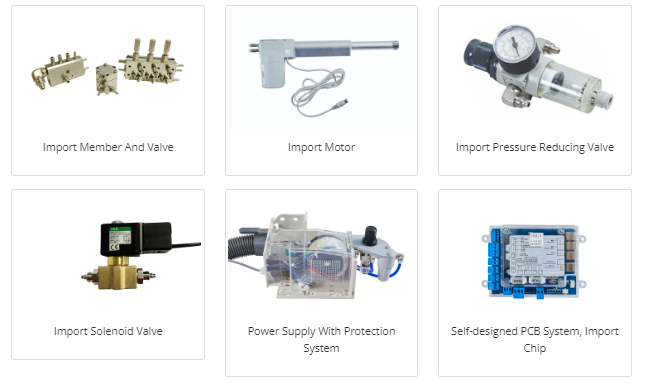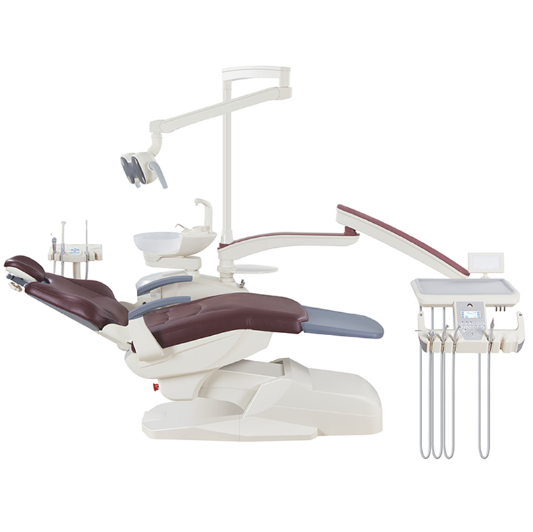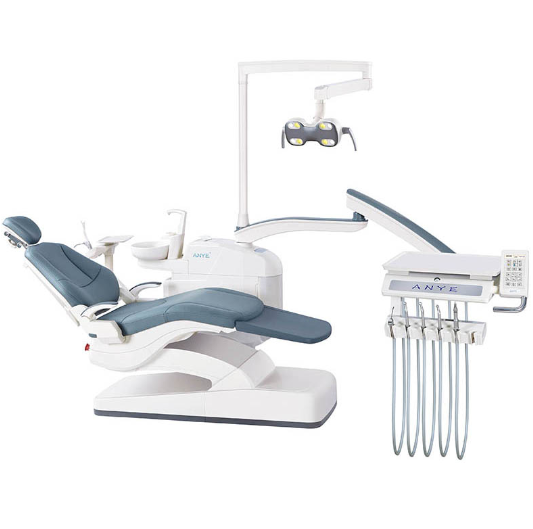Why Are Dental Chair Valves Important in Dentistry?
As we all know, the dental chair is constructed with many types of components to ensure efficiency and hygiene. The dental chair valves are one of the important dental components. To let you have a full understanding of the dental chair, the author will introduce you to the dental chair valves.
What Are Dental Chair Valves?
Dental chair valves are integral components of dental chairs that facilitate the control and regulation of air, water, and other utilities essential during dental treatments. These valves manage the flow, pressure, and distribution of air and water to various dental instruments used by dentists during procedures.
How Many Types of Dental Chair Valves Are There?
The dental chair valves also come to be developed various types of valves for different purposes. In this section, the author would list the main types of the dental chair valves:
●Air Control Valve: This regulates the airflow to dental handpieces, controlling their speed and functionality. Dentists use different handpieces for various procedures, and the air control valve allows them to adjust the air pressure for optimal performance.
●Water Control Valve: Responsible for managing the flow and pressure of water used in dental procedures. It ensures a steady stream of water for cooling dental drills, rinsing the patient's mouth, and other purposes.
●Solenoid Valves: These electronically controlled valves manage the flow of both air and water. Dentists can control these valves using foot pedals or switches on the dental unit, allowing for hands-free operation during procedures.
●Air Control Valve: This regulates the airflow to dental handpieces, controlling their speed and functionality. Dentists use different handpieces for various procedures, and the air control valve allows them to adjust the air pressure for optimal performance.
●Water Control Valve: Responsible for managing the flow and pressure of water used in dental procedures. It ensures a steady stream of water for cooling dental drills, rinsing the patient's mouth, and other purposes.
●Solenoid Valves: These electronically controlled valves manage the flow of both air and water. Dentists can control these valves using foot pedals or switches on the dental unit, allowing for hands-free operation during procedures.
Why Are Dental Chair Valves Important in Dentistry?
You can not underestimate the importance of dental chair valves in dentistry. A simple dental chair valve benefits a lot for dentistry.
●Functionality and Control
Dental procedures require precise control over instruments like drills, scalers, or air-water syringes. Valves regulate the flow and pressure of air, water, and other substances used in these instruments.
They act as switches, allowing dentists to control when and how much of each substance is delivered, ensuring accuracy and control during treatments.
They act as switches, allowing dentists to control when and how much of each substance is delivered, ensuring accuracy and control during treatments.
●Patient Comfort and Experience
Imagine getting a dental procedure done without the ability to control the water flow or the air pressure from the handpiece. Valves enable dentists to fine-tune these elements, making procedures more comfortable for patients by reducing discomfort, managing saliva, and minimizing spray.
●Infection Prevention
One of the critical functions of these valves is to prevent the backflow or crossover of fluids between different lines within the dental unit. This prevents contaminants or oral bacteria from being transferred from one patient to another, contributing significantly to infection control and maintaining a sterile environment.
●Safety Measures
Valves act as safety mechanisms, preventing sudden surges of air or water pressure that could potentially harm patients or disrupt the dental procedure. They ensure that instruments function within safe and controllable parameters, avoiding any accidental harm to patients or dental staff.
●Maintenance and Regular Checks
Given their importance, regular maintenance and checks on these valves are crucial. Routine inspections help ensure they are functioning correctly, preventing malfunctions that could disrupt treatments or compromise safety and hygiene standards.
Conclusion
Although dental chair valves might seem like small components, they are the important component in the dental chairs, because their role in maintaining a safe, controlled, and comfortable environment for both dentists and patients cannot be overstated. They are integral to the smooth operation of dental procedures and the maintenance of high standards in dental care.




Leave a comment